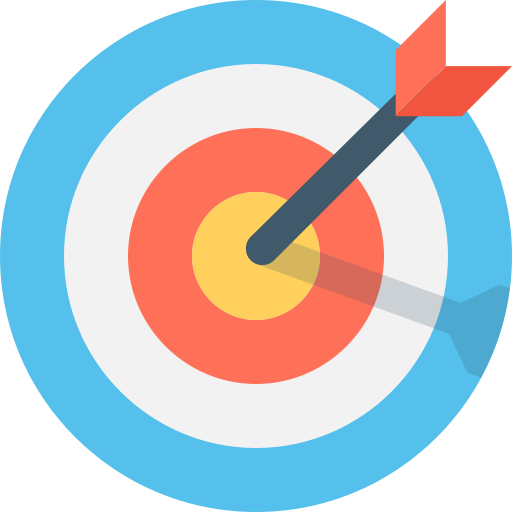Liver Disease Treatment Market Size
The global liver disease treatment market size was valued at $22.81 billion in 2025 and is projected to reach $39.32 billion by 2031, growing at a CAGR of 9.5% during the forecast period.
Liver Disease Treatment Market Overview
Liver disease treatment has developed significantly, particularly with the recent FDA approval of Rezdiffra (resmetirom), the first drug specifically targeting liver scarring due to nonalcoholic steatohepatitis (NASH). This condition is a severe form of nonalcoholic fatty liver disease (NAFLD) that can lead to liver inflammation. The approval of Rezdiffra marks a pivotal moment as it offers a direct pharmacological intervention for patients who previously relied solely on lifestyle changes such as diet and exercise. The drug functions by activating thyroid hormone receptors in the liver, which helps reduce fat accumulation and improve liver health. Clinical trials have shown promising results, with a notable percentage of participants experiencing improvements in liver scarring and inflammation after just one year of treatment, highlighting its potential to alter the disease's progression effectively.
For pharmaceutical companies, advancements in liver disease treatments like Rezdiffra present substantial business opportunities. The market potential is vast, as effective treatments can not only improve patient outcomes but also reduce healthcare costs associated with advanced liver disease complications. Furthermore, companies involved in clinical trials can establish strong reputations and partnerships within the healthcare community, enhancing their market presence. As awareness of liver health grows and more patients seek effective treatments, pharmaceutical firms that invest in research and development for liver diseases are likely to see significant returns on their investments while contributing to public health improvements.
Liver Disease Treatment Market Dynamics
The liver disease treatmentmarket is expected to witness significant growth in the future due to the increasing prevalence of liver diseases, including hepatitis and non-alcoholic fatty liver disease (NAFLD), rising geriatric population more susceptible to liver conditions, and growing awareness and initiatives for early diagnosis and treatment of liver diseases. However, the high costs associated with innovative treatments and medications, stringent regulatory requirements for drug approvals, and limited access to healthcare services in certain regions are restraining the growth of the market.
Furthermore, available markets in developing regions with rising healthcare infrastructure, increased demand for personalized medicine and targeted therapies, and technological advancements in drug delivery systems and diagnostics are the key trends propelling the liver disease treatmentmarket.
Increasing Prevalence of Liver Diseases, such as Hepatitis and Nonalcoholic fatty liver disease (NAFLD), is Driving the Liver Disease Treatment Market
The increasing prevalence of liver diseases, such as hepatitis and nonalcoholic fatty liver disease (NAFLD), is significantly impacting the liver disease treatmentmarket, by driving innovation and investment in therapeutic options.
• For instance, on March 28, 2024, the FDA approved Rezdiffra (resmetirom), marking it as the first treatment specifically for patients with liver scarring due to noncirrhotic NASH. This approval addresses a critical unmet need, as previously there were no approved medications for this condition, which affects millions in the U.S.
• Moreover, in December 2022, Altimmune, Inc. announced positive topline results from its clinical trials for Pemvidutide, a drug that demonstrated significant potential in reducing liver fat content and inflammation in NAFLD patients.
The urgency to find effective treatments has also led to government initiatives like the NIH-funded FLINT study, which highlighted the efficacy of Obeticholic Acid (OCA) in improving liver health among NASH patients.Additionally, pharmaceutical companies are increasingly focusing on antiviral treatments for hepatitis, with established drugs like Mavyret and Zepatier, which have shown effectiveness in managing chronic hepatitis B and C infections. The rising incidence of liver diseases is prompting these companies to expand their research and development efforts, thereby enhancing their market presence and contributing to advancements in treatment options.
By Disease Type, the Hepatitis Segment is projected to be the Largest Segment in the Liver Disease Treatment Market
Hepatitis is the largest segment in the liver disease treatmentmarket, driven by increasing prevalence rates, advancements in treatment options, and proactive government initiatives.
Several key companies are actively contributing to this growth through innovative product launches and research initiatives.
• For instance, Gilead Sciences has been instrumental in developing effective therapies for hepatitis C, with its drug Harvoni generating significant sales since its launch, which transformed hepatitis C from a chronic disease into a manageable condition for many patients.
• In March 2022, VBI Vaccines Inc. received FDA approval for PreHevbrio, a three-antigen hepatitis B vaccine aimed at adults, marking a significant advancement in preventive measures against this virus.
Moreover, ongoing clinical trials are exploring novel therapies that could redefine treatment protocols for hepatitis.
• For example, in 2023, Virion Therapeutics began dosing patients in a Phase Ib trial investigating VRON-0200 as a potential functional cure for chronic hepatitis B virus infection. This trial represents the growing focus on developing curative therapies rather than just managing symptoms.
As awareness of hepatitis-related health issues increases and more effective treatments become available, the demand for hepatitis treatments is expected to surge. This trend is further supported by the increasing incidence of hepatitis infections globally, with an estimated 300 million people chronically infected with hepatitis B alone. The combination of innovative product launches, government support, and rising patient populations positions the hepatitis segment as one of the fastest-growing areas within the liver disease treatment market.
By Geography, North America Holds the Largest Share in the Market Revenue
North America holds the largest share of the liver disease treatmentmarket, driven by rising prevalence of liver diseases, lifestyle changes, and robust government initiatives aimed at enhancing healthcare access and innovation.
• For example, in 2023, the North American liver disease therapeutics market accounted for approximately 38.4% of the global market share, reflecting its dominance due to the high incidence of conditions such as hepatitis, non-alcoholic fatty liver disease (NAFLD), and liver cancer.
The Centers for Disease Control and Prevention (CDC) reports alarming statistics, indicating that about 25,000 men and 11,000 women are diagnosed with liver cancer annually in the U.S., with many more suffering from chronic liver diseases that can escalate to life-threatening conditions if untreated.
Government initiatives play a crucial role in addressing these health challenges.
• For instance, substantial funding has been allocated to research and development efforts aimed at discovering new treatments and improving existing therapies.
• Companies like Gilead Sciences and AbbVie have been at the forefront of developing antiviral drugs that target hepatitis C, which has seen a notable increase in treatment uptake due to the effectiveness of direct-acting antivirals (DAAs).
• Additionally, Madrigal Pharmaceuticals announced positive results from its phase 3 trial for Resmetirom in January 2022, targeting NAFLD, which underscores the ongoing innovation within the sector.
Furthermore, lifestyle factors such as increased alcohol consumption and poor dietary habits are contributing to the rising incidence of liver diseases.
• According to the American Liver Foundation, over 14 million adults in the U.S. struggle with alcohol use disorders, leading to a surge in liver-related health issues.
This situation is compounded by an aging population that is more susceptible to liver diseases; thus, there is a pressing need for effective treatments tailored to this demographic.
Key Target Audience:
• Hospitals and Clinics
• Pharmaceutical Companies
• Healthcare Providers
• Medical Device Manufacturers
• Government Health Agencies
List of the Key Players Profiled in the Report Includes:
• Johnson & Johnson Services Inc.
• F. Hoffmann-La Roche Ltd.
• Pfizer Inc.
• Abbott Laboratories
• Novartis AG
• Eli Lilly and Company
• Gilead Sciences
• Bristol Myers Squibb
• AbbVie Inc.
• Zydus Pharmaceuticals Inc.
Recent Developments:
• In May 2025, Roche launched the Elecsys PRO‑C3 diagnostic assay, designed to non-invasively and accurately assess liver fibrosis severitykey for MASLD/NASH managementaddressing the growing patient need and reducing reliance on liver biopsies.
• In April 2025, Bristol Myers Squibb received FDA approval for the combination of nivolumab (Opdivo) + ipilimumab (Yervoy) as a first-line treatment for unresectable or metastatic hepatocellular carcinoma (HCC)—the most common form of primary liver cancer. This marks the first full FDA approval for this immunotherapy regimen in this setting, expanding its use from second-line to first-line patients.
• In February 2025, Gilead Sciences received conditional approval from the European Commission for Livdelzi® (seladelpar), a novel treatment for primary biliary cholangitis (PBC). The therapy is approved for use either alone or in combination with ursodeoxycholic acid, aimed at improving liver function in adult patients.
Market Segmentation:
The research report includes in-depth coverage of the industry analysis with size, share, and forecast for the below segments:
Market by, Treatment Type:
• Antiviral Drugs
• Chemotherapy
• Corticosteroids
• Immunoglobulins
• Immunosuppressants
• Targeted Therapy
• Vaccines
Market by, Disease Type:
• Autoimmune Diseases
• Cancer
• Genetic Disorders
• Hepatitis
• Immune Disorders
• Infectious Agents & Parasite
• Inherited Liver Diseases
• Non-alcoholic Fatty Liver Disease (NAFLD)
• Toxic Injury
• Tumors
• Other Disease Types
Market by, End User:
• Clinics
• Diagnostic Laboratories
• Hospitals & Specialty
• Other End Users
Market by, Geography:
The liver disease treatmentmarket report also analyzes the major geographic regions and countries of the market. The regions and countries covered in the study include:
• North America (The United States, Canada, Mexico), Market Estimates, Forecast & Opportunity Analysis
• Europe (Germany, France, UK, Italy, Spain, Rest of Europe), Market Estimates, Forecast & Opportunity Analysis
• Asia Pacific (China, Japan, India, South Korea, Australia, New Zealand, Rest of Asia Pacific), Market Estimates, Forecast & Opportunity Analysis
• South America (Brazil, Argentina, Chile, Rest of South America), Market Estimates, Forecast & Opportunity Analysis
• Middle East & Africa (UAE, Saudi Arabia, Qatar, Iran, South Africa, Rest of Middle East & Africa), Market Estimates, Forecast & Opportunity Analysis
The report offers insights into the following aspects:
• Analysis of major market trends, factors driving, restraining, threatening, and providing opportunities for the market.
• Analysis of the market structure by identifying various segments and sub-segments of the market.
• Understand the revenue forecast of the market for North America, Europe, Asia-Pacific, South America, and Middle East & Africa.
• Analysis of opportunities by identification of high-growth segments/revenue pockets in the market.
• Understand major player profiles in the market and analyze their business strategies.
• Understand competitive developments such as joint ventures, alliances, mergers and acquisitions, and new product launches in the market.
Table Of Content
1 Market Introduction
1.1 Market Definition
1.2 Research Scope and Segmentation
1.3 Stakeholders
1.4 List of Abbreviations
2 Executive Summary
3 Research Methodology
3.1 Identification of Data
3.2 Data Analysis
3.3 Verification
3.4 Data Sources
3.5 Assumptions
4 Market Dynamics
4.1 Market Drivers
4.2 Market Restraints
4.3 Market Opportunities
4.4 Market Challenges
5 Porter's Five Force Analysis
5.1 Bargaining Power of Suppliers
5.2 Bargaining Power of Buyers
5.3 Threat of New Entrants
5.4 Threat of Substitutes
5.5 Competitive Rivalry in the Market
6 Global Liver Disease Treatment Market by, Treatment Type
6.1 Overview
6.2 Antiviral Drugs
6.3 Chemotherapy
6.4 Corticosteroids
6.5 Immunoglobulins
6.6 Immunosuppressants
6.7 Targeted Therapy
6.8 Vaccines
7 Global Liver Disease Treatment Market by, Disease Types
7.1 Overview
7.2 Autoimmune Diseases
7.3 Cancer
7.4 Genetic Disorders
7.5 Hepatitis
7.6 Immune Disorders
7.7 Infectious Agents & Parasite
7.8 Inherited Liver Diseases
7.9 Non-alcoholic Fatty Liver Disease (NAFLD)
7.10 Toxic Injury
7.11 Tumors
7.12 Other Disease Types
8 Global Liver Disease Treatment Market by, End User
8.1 Overview
8.2 Clinics
8.3 Diagnostic Laboratories
8.4 Hospitals & Specialty
8.5 Other End Users
9 Global Liver Disease Treatment Market by, Geography
9.1 Overview
9.2 North America
9.2.1 US
9.2.2 Canada
9.2.3 Mexico
9.3 Europe
9.3.1 Germany
9.3.2 France
9.3.3 UK
9.3.4 Italy
9.3.5 Spain
9.3.6 Rest of Europe
9.4 Asia Pacific
9.4.1 China
9.4.2 Japan
9.4.3 India
9.4.4 South Korea
9.4.5 Australia
9.4.6 New Zealand
9.4.7 Rest of Asia Pacific
9.5 South America
9.5.1 Brazil
9.5.2 Argentina
9.5.3 Chile
9.5.4 Rest of South America
9.6 Middle East & Africa
9.6.1 UAE
9.6.2 Saudi Arabia
9.6.3 Qatar
9.6.4 Iran
9.6.5 South Africa
9.6.6 Rest of Middle East & Africa
10 Key Developments
11 Company Profiling
11.1 Johnson & Johnson Services Inc.
11.1.1 Business Overview
11.1.2 Product/Service Offering
11.1.3 Financial Overview
11.1.4 SWOT Analysis
11.1.5 Key Activities
11.2 F. Hoffmann-La Roche Ltd.
11.3 Pfizer Inc.
11.4 Abbott Laboratories
11.5 Novartis AG
11.6 Eli Lilly and Company
11.7 Gilead Sciences
11.8 Bristol Myers Squibb
11.9 AbbVie Inc.
11.10 Zydus Pharmaceuticals Inc.
Report Details
| SKU Code | : DI2604 |
| Industry | : Healthcare |
| Region | : Global |
| Tables | : 150 |
| Format | : Electronic PDF |
| Published | : 2025 |
Choose License Type
Why Diligence Insights?
-

24/7 Research Support
We understand the various needs of our customers and remain always flexible in our approach. And we have a 24X7 client engagement team to ensure the best customer experience.
-

Tailor-Made Values
We consider each and every client’s business issues unique and exhibit precise solutions befitting your business goals and expectations.
-

Data Accuracy and Reliability
We offer a 360-degree view of the market to generate high standards and comprehensive data.
-

Customer Satisfaction
At Diligence Insights, we are committed to offering high-quality market research reports to our esteemed clients and focus on providing innovative solutions.
-

Information Security
We stand by the information security policy and stick to keeping your business information safe and secure.
